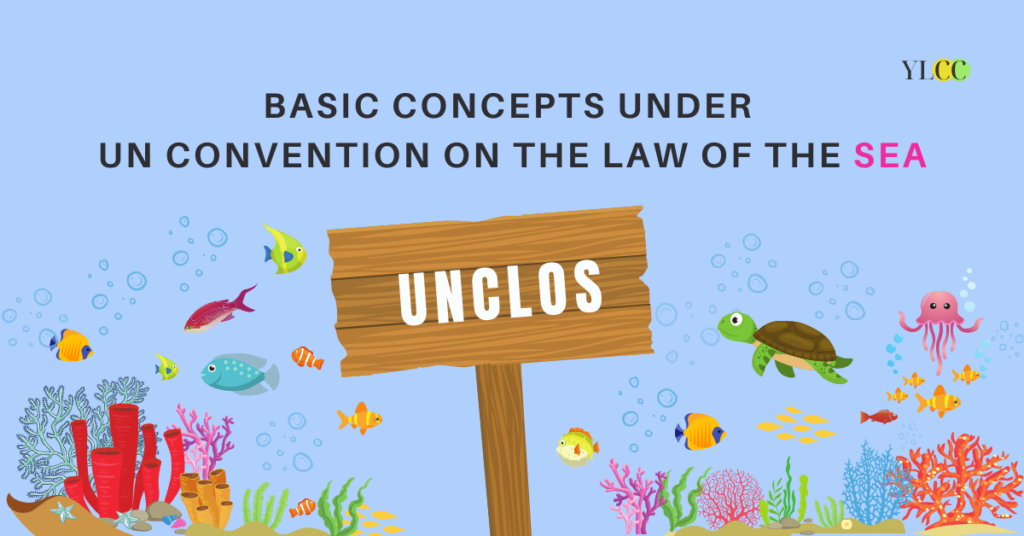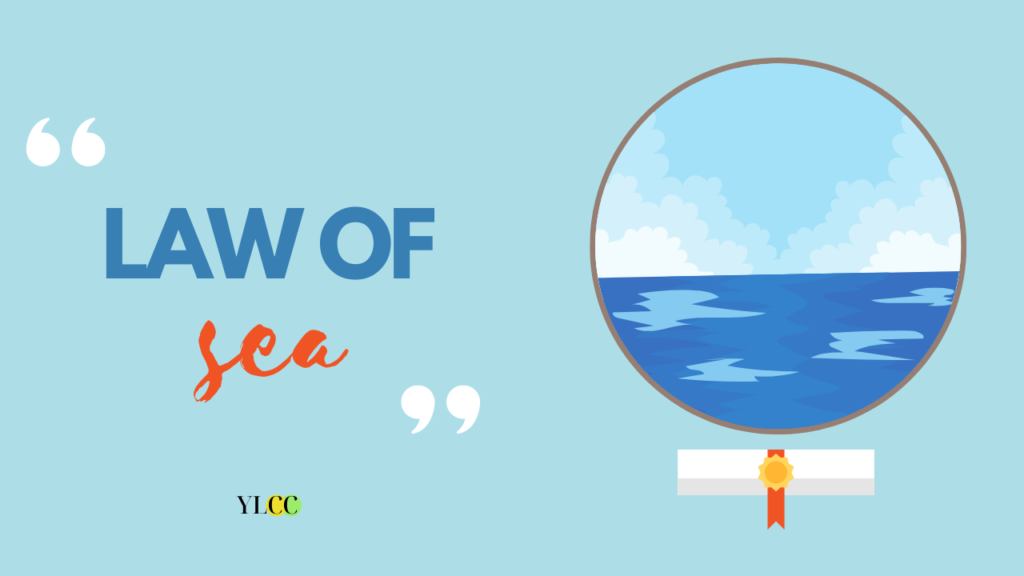
Introduction
The sea is full of resources which was realized by the international community with the advancement of capabilities of extraction. However, there was no uniform law governing the sea, and the situation was exploited by influential states who pursued a monopoly. This inspired the universal codification of the Law of the Sea.
The UN Convention of the Law of the Sea (UNCLOS) is an international legal framework for the regulation of the rights and liabilities of States towards the seas. It is the Public International Law counterpart to the Maritime Law, which is a Private International Law concept.
The UN conferences preceding the formulation of UNCLOS were based on the principle of “Common Heritage of Mankind, as opposed to “Freedom of High Seas”, in respect of the access and exploitation of sea and maritime resources.
UNCLOS determines several concepts, such as: maritime borders/zones, right of passage, rights of accessing the seas, protecting marine environment, rights of exploiting marine resources, rights to undertake scientific marine research etc.
In this article we will be looking at the 4 basic and most important concepts under the UNCLOS:
- Maritime Zones
A country’s maritime border starts from its baseline. The baseline is measured from the low-tide point of a sea coast[1]. It is the most important concept under the UNCLOS since it serves as the starting point (or point of reference) for determining various coastal zones of states.
- Territorial Sea: It stretches seaward from the baseline for a stretch of 12 nautical miles[2] (22 kms). All the laws of the coastal state apply up to this point. The sovereignty of the coastal state extends to the airspace above, and the seabed and subsoil below the territorial sea. Any foreign vessels have only the Right of Innocent Passage through this stretch. Any underwater vehicles are required to navigate only on the surface with their bearing flags visible.
The landward area from baseline is called “Internal Waters”. Here, the legal application is much the same, but the right of innocent passage to foreign ships is not usually granted[3].
- Contiguous Zone: This stretches 12 nautical miles towards the sea from the end of Territorial Sea [or 24 nautical miles (44 kms) from the baseline]. All the laws relating to: trade, business, customs, immigration, environment and sanitation apply to this region. Violations of any such laws can be penalized by the coastal state[4].
Unlike Territorial Sea, here the applicability of the coastal state law is limited to the ocean’s surface and floor. It does not provide air and space rights[5]. However, innocent passage is still available.
- Exclusive Economic Zone (EEZ): This zone stretches for 200 nautical miles seaward, which are measured from the baseline[6]. However, the EEZ actually lies beyond the territorial sea. Therefore, the EEZ exclusively stretches for 188 nautical miles only. While the aforementioned concepts evolved from customary international law mostly, the EEZ is a creation of the UNCLOS.
A state in this zone has the exclusive right to exploit or conserve any resources found within the water, on the sea floor, or under the subsoil. States also have exclusive rights to engage in offshore energy generation from the waves, currents, and wind etc[7].

However, the EEZ does not give a coastal state the right to prohibit or limit freedom of navigation or overflight.[8]
- Continental Shelf
The continental shelf is also one of the most important concepts under the UNCLOS. It refers to a geological extension of the landmass of a coastal state seaward, which ultimately merges with the seabed. The coastal state enjoys certain rights of exploitation within the stretch of their shelf.
A continental shelf is limited to 200 nautical miles from the baseline, but can be extended up to 350 nautical miles according to the provisions of the UNCLOS[9].
Another parameter to measure the stretch of a continental shelf is within 100 nautical miles from the 2500 meters isobath[10]. (An isobath is an imaginary line or a line on a map or chart that connects all points having the same depth below a water surface)[11].
The continental shelf can only be exploited for non-living resources and sedentary living resources[12]. This is unlike the EEZ, which can be exploited for both living and non-living resources[13].
The UNCLOS also established a Commission on the Limits of the Continental Shelf (CLCS). The purpose of the Commission is to make recommendations to the coastal state on matters related to the limits of their Continental Shelf[14].
- Innocent Passage
Article 17 of the UNCLOS provides for the Right of innocent passage to ships of all states (whether coastal or landlocked)[15] through the territorial sea of a coastal country. Article 19 defines Innocent Passage as:
“Passage is innocent so long as it is not prejudicial to the peace, good order or security of the coastal State. Such passage shall take place in conformity with this Convention and with other rules of international law[16].”
The Article further discusses what does not constitute as innocent passage.
However, the concept of innocent passage is not created by the UNCLOS, but has evolved from the General Principles of International Law[17].
Right of innocent passage is only exercised in that part of the sea where a state exercises sovereign power. Therefore, it does not apply to high seas. The reason for granting innocent passage is manifold: promotion of trade/commerce, humanitarian aid, communication etc. Right of innocent passage generally exists as an exception to the sovereignty of the coastal state in her territorial waters. It is because of the obligation on the coastal states to grant innocent passage to foreign vessels (subject to certain restrictions permitted under the UNCLOS).
- Right of Access of Land-locked States
As previously mentioned, the seas are a common heritage of mankind. Therefore, the rights to enjoy the riches of the sea are available to all the states, irrespective of the fact that they have a direct access to the seas (a coast) or not. Therefore, land-locked countries also enjoy the right to access to the sea under the UNCLOS.
However, this right of land-locked states is a general right. It is not a guaranteed right. It is subject to the agreements and treaties between the concerned states (land-locked state and the transit/coastal states).
UNCLOS provides for various rights of land-locked states in respect of the sea:
- Freedom of transit through transit states[18]
- Right to enjoy treatment equal to that accorded to other foreign ships in maritime ports of land-locked state’s ships flying;[19]
- Right to innocent passage through the territorial sea of land-locked state’s ships;[20]
- Freedom of navigation in EEZs[21] and the high seas[22].
Landlocked states have the right to exploit living resources of the EEZ of coastal states[23]. However, it is subject to ‘an appropriate part’ of the surplus living resources of the EEZ of coastal states from the same sub-region or region[24].

However, these rights are contingent upon the agreement between the concerned states, and hence not absolute. The realization of these rights also depends on their relations. The political situations in transit states also affect these rights of the landlocked states[25].
Conclusion
UNCLOS as a framework has brought in a number constructive changes for the better. However, for a better understanding of the law, it is important to have a strong grasp over the basic concepts that are laid down under the UNCLOS.
[1] Article 5, Normal baseline, UNCLOS
[2] Article 3, Breadth of a territorial sea, UNCLOS
[3] Amit Sharma, What is a Baseline, Marine Gyaan (2016). Accessed at: https://marinegyaan.com/what-is-a-baseline/
[4] Article 33, Contiguous zone, UNCLOS
[5] The Fletcher School, Tufts University, Law of the Sea: A Policy Primer, Chapter 2: Maritime Zone, Contiguous Zone (2021). Accessed at: https://sites.tufts.edu/lawofthesea/chapter-two/
[6] Article 57, Breadth of the exclusive economic zone, UNCLOS
[7] Ibid 5: Exclusive Economic Zone
[8] Drishti IAS, UNCLOS Maritime Zones, International Relations (2019). Accessed at: https://www.drishtiias.com/daily-updates/daily-news-analysis/unclos-maritime-zones
[9] Article 76, Definition of the continental shelf, the UNCLOS
[10] Hiteshk, 5 Terms Every Mariner Should Know Under UNCLOS, Marine Insight (2019). Accessed at: https://www.marineinsight.com/maritime-law/5-terms-every-mariner-should-know-under-unclos/
[11] Merriam Webster Dictionary. Accessed at: https://www.merriam-webster.com/dictionary/isobath
[12] Ibid 5: Continental Shelf
[13] Ibid 7
[14] Shivangi Saxena, Continental Shelf under the U.N. Convention on the Law of Sea,1982 UNCLOS, Section: Commission on the Limits of Continental Shelf, Legal Service India E-Journal, (2019). Accessed at: https://www.legalserviceindia.com/legal/article-1158-continental-shelf-under-the-u-n-convention-on-the-law-of-sea-1982-unclos.html
[15] Article 17: Right of innocent passage, UNCLOS. Accessed at: https://www.un.org/depts/los/convention_agreements/texts/unclos/closindx.htm
[16] Article 19: Meaning of innocent passage, UNCLOS.
[17] Law Teacher, The Innocent Passage in the UN Convention, Section: Concept of Innocent Passage under the International Law (2019). Accessed at: https://www.lawteacher.net/free-law-essays/international-law/the-innocent-passage-in-the-un-convention-international-law-essay.php
[18] Article 125, Right of access to and from the sea and freedom of transit, UNCLOS
[19] Article 131, Equal treatment in maritime ports, UNCLOS
[20] Article 17, UNCLOS
[21] Article 58, Rights and duties of other States in the exclusive economic zone, UNCLOS
[22] Articles 87 and 90, UNCLOS
[23] Article 69, Right of land-locked States, UNCLOS
[24] Ernesta Swanepoel, The Law of the Sea and Landlocked States, Policy Briefing 205, SAIIA (2020). Accessed at: https://media.africaportal.org/documents/Policy-Briefing-205-swanepoel_1.pdf
[25] Endalcachew Bayeh, The Rights of Land-Locked States Under the International Law: The Role of Bilateral/Multilateral Agreements. Social Sciences. Vol. 4, No. 2, 2015, pp. 27-30. doi: 10.11648/j.ss.20150402.12. Accessed at: http://unohrlls.org/custom-content/uploads/2013/09/The-Rights-of-Land-Locked-States-in-the-International-Law-The-Role-of-Bilateral-and-Multilateral-Agreements.pdf
YLCC would like to thank Tanmay Dhiman for his valuable inputs in this article.







